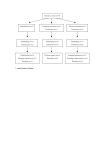Management and outcome of bleeding pseudoaneurysm associated with chronic pancreatitis
- PMID: 16405731
- PMCID: PMC1361773
- DOI: 10.1186/1471-230X-6-3
Management and outcome of bleeding pseudoaneurysm associated with chronic pancreatitis
Abstract
Background: A bleeding pseudoaneurysm in patients with chronic pancreatitis is a rare and potentially lethal complication. Optimal treatment of bleeding peripancreatic pseudoaneurysm remains controversial. This study reports on experience at Chang Gung Memorial Hospital (CGMH) in managing of bleeding pseudoaneurysms associated with chronic pancreatitis.
Methods: The medical records of 9 patients (8 males and 1 female; age range, 28-71 years; median, 36 years) with bleeding pseudoaneurysms associated with chronic pancreatitis treated at CGMH between Aug. 1992 and Sep. 2004 were retrospectively reviewed. Alcohol abuse (n = 7;78%) was the predominant predisposing factor. Diagnoses of bleeding pseudoaneurysms were based on angiographic (7/7), computed tomographic (4/7), ultrasound (2/5), and surgical (2/2) findings. Whether surgery or angiographic embolization was performed was primarily based on patient clinical condition. Median follow-up was 38 months (range, 4-87 months).
Results: Abdominal computed tomography revealed bleeding pseudoaneurysms in 4 of 7 patients (57%). Angiography determined correct diagnosis in 7 patients (7/7, 100%). The splenic artery was involved in 5 cases, the pancreaticoduodenal artery in 2, the gastroduodenal artery in 1, and the middle colic artery in 1. Initial treatment was emergency (n = 4) or elective (n = 3) surgery in 7 patients and arterial embolization in 2. Rebleeding was detected after initial treatment in 3 patients. Overall, 5 arterial embolizations and 9 surgical interventions were performed; the respective rates of success of these treatments were 20% (1/5) and 89% (8/9). Five patients developed pseudocysts before treatment (n = 3) or following intervention (n = 2). Pseudocyst formation was identified in 2 of the 3 rebleeding patients. Five patients underwent surgical treatment for associated pseudocysts and bleeding did not recur. One patient died from angiography-related complications. Overall mortality rate was 11% (1/9). Surgery-related mortality was 0%.
Conclusion: Angiography is valuable in localizing bleeding pseudoaneurysms. In this limited series, patients with bleeding pseudoaneurysms associated with chronic pancreatitis treated surgically seemingly obtained good outcomes.
Figures
Similar articles
-
Visceral pseudoaneurysms due to pancreatic pseudocysts: rare but lethal complications of pancreatitis.J Vasc Surg. 2000 Oct;32(4):722-30. doi: 10.1067/mva.2000.110055. J Vasc Surg. 2000. PMID: 11013036
-
Angiographic intervention in patients with a suspected visceral artery pseudoaneurysm complicating pancreatitis and pancreatic surgery.Arch Surg. 2011 Jun;146(6):647-52. doi: 10.1001/archsurg.2011.11. Epub 2011 Feb 21. Arch Surg. 2011. PMID: 21339414
-
Selective embolization for bleeding visceral artery pseudoaneurysms in patients with pancreatitis.Hepatobiliary Pancreat Dis Int. 2010 Dec;9(6):634-8. Hepatobiliary Pancreat Dis Int. 2010. PMID: 21134834
-
[Clinical features of pseudoaneurysms complicating pancreatitis: single center experience and review of Korean literature].Korean J Gastroenterol. 2007 Aug;50(2):108-15. Korean J Gastroenterol. 2007. PMID: 17928754 Review. Korean.
-
Management of chronic pancreatitis complicated with a bleeding pseudoaneurysm.World J Gastroenterol. 2014 Nov 21;20(43):16132-7. doi: 10.3748/wjg.v20.i43.16132. World J Gastroenterol. 2014. PMID: 25473165 Free PMC article. Review.
Cited by
-
Indian College of Radiology and Imaging Consensus Guidelines on Interventions in Pancreatitis.Indian J Radiol Imaging. 2022 Jul 31;32(3):339-354. doi: 10.1055/s-0042-1754313. eCollection 2022 Sep. Indian J Radiol Imaging. 2022. PMID: 36177275 Free PMC article. Review.
-
Cross clamping of the supraceliac aorta is effective for bleeding control in ruptured giant splenic artery pseudoaneurysm when proximal and distal control of the splenic artery is not possible: a case report.J Vasc Bras. 2022 Sep 30;21:e20210210. doi: 10.1590/1677-5449.202102102. eCollection 2022. J Vasc Bras. 2022. PMID: 36259051 Free PMC article.
-
Complications of chronic pancreatitis prior to and following surgical treatment: A proposal for classification.World J Clin Cases. 2022 Aug 6;10(22):7808-7824. doi: 10.12998/wjcc.v10.i22.7808. World J Clin Cases. 2022. PMID: 36158501 Free PMC article.
-
Hematochezia From Splenic Arterial Pseudoaneurysm Ruptured Into Pancreatic Pseudocyst Coexisting With Fistula to the Colon: A Case Report and Literature Review.Gastroenterology Res. 2014 Apr;7(2):73-77. doi: 10.14740/gr607w. Epub 2014 May 2. Gastroenterology Res. 2014. PMID: 27785274 Free PMC article.
-
Gastrointestinal bleeding complication of gastric fistula after sleeve gastrectomy: consider pseudoaneurysms.Surg Endosc. 2013 Aug;27(8):2849-55. doi: 10.1007/s00464-013-2833-7. Epub 2013 Feb 8. Surg Endosc. 2013. PMID: 23392987
References
-
- Gambiez LP, Ernst OJ, Merlier OA, Porte HL, Chambon JPM, Quandalle PA. Arterial embolization for bleeding pseudocysts complicating chronic pancreatitis. Arch Surg. 1997;132:1016–1021. - PubMed
MeSH terms
LinkOut - more resources
Full Text Sources
Medical



